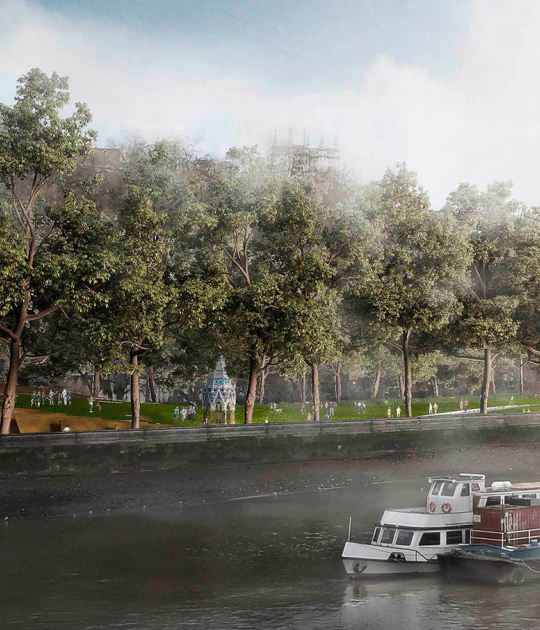The greater the diversity of plants, the greater the variety of wildlife it will support. Plant and wildlife populations will become more resilient. This increase in biodiversity will create a natural ecosystem within Thessaloniki, helping the city maintain a healthy environment for its citizens.
Description of project by Sauerbruch Hutton, Gustafson Porter + Bowman, Stavropoulou Architects
Thessaloniki, placed between the mountains and the sea, is layered with memories of its history and cultures. The new ConfEx Park, at the heart of Greece’s largest and most influential northern city, embodies its present and future ambition to be the region’s major business and tourist destination. It will shape an urban area where some of the city’s largest buildings join together in an urban park to welcome international events while still offering local meeting spots and intimate gardens for the citizens of Thessaloniki.
As the ConfEx area is situated outside the ancient city gates, there are major routes that fan out from what was once a walled city. Some of these, currently blocked, can now be reintroduced for pedestrians and cyclists: The “Culture Path”, moves diagonally across the site and links the new metro at Egnatia to the Exhibition Halls, the MMCA Museum, the Congress Centre and the Archaeological and Byzantine Museums and enables a pedestrian connection that avoids the heavily trafficked roads.
The “Mountain route” aims to reopen the existing axis running North-South and emphasizes the relationship between mountain, sea, University, ConfEx site and wider city. These lines naturally split the landscape into three parts: the western area between Aggelaki and the central axis, that becomes a space for play and temporary installations; the central area fanning out from the YMCA Square and the Contemporary Art Gallery becomes the location for small scale cultural gardens, and cafes arranged around the existing curved canopy.
The south area adjacent to Leoforus Stratou that addresses the new Conference Centre, will become a large amphitheatre for performance and events. Addressing the memory of the historic terrain this park also includes some of the most important pavilions of the existing Helexpo site: the YMCA Arch, the OTE tower together with the Esso Pappas Pavilion and the Macedonian Museum of Contemporary Art, form familiar landmarks in this new hybrid landscape.
Above, the Exhibition Halls and the Congress Centre can be recognized by their generously overhanging roofs that float like clouds in this landscape. New foyer pavilions akin to the size of the existing cultural buildings propose a marriage of scales. At times when the halls are not in use for exhibitions these areas can remain open for public use as cultural and social venues, for lectures, exhibitions or parties with a direct view and access to the park. Similarly, at the Congress Center a generous shaded deck serves as a belvedere and open-air stage facing the natural amphitheatre on the lawn.
The large halls are connected with each other on the ground across the park. However, in addition a corridor and bridge connects all first-floor exhibition areas including an open-air exhibition on the rooftop of hall 2. This walkway in the sky invites locals and tourists to take a stroll with views over the rooftops of Thessaloniki.
The whole project uses both natural and artificial means to provide a healthy environment with a moderate climate: in summer, trees, shading roofs and water features will help to moderate outside air temperatures. In winter, roofs shelter from rain, trees will reduce wind-movements and the generously glazed facades will benefit from the low standing winter sun.
The roofs are equipped to harvest solar energy through PV-collectors and rainwater to serve the park. The buildings will use geothermal energy and seawater for cooling. Cross ventilation using the natural stack-effect in the exhibition halls will reduce energy consumption through mechanical ventilation.
The ConfEx Park has the potential to become a beacon of technical and social sustainability as this central site in the city is being regenerated into a verdant nexus for residents and visitors alike. The park’s three landscaped areas will provide for a range of planted habitats, that allow the introduction of a diverse range of native and cultural trees and plants found in the Thessaloniki region.
These are the trees and plants that are capable of resisting climate change and the ever-increasing extremes of temperature, storms and drought. The greater the diversity of plants, the greater the range of wildlife they will support and the more resilient the plant and wildlife populations will become. This increase in biodiversity will create a natural ecosystem within Thessaloniki, helping the city to support a healthy environment for its citizens.


































